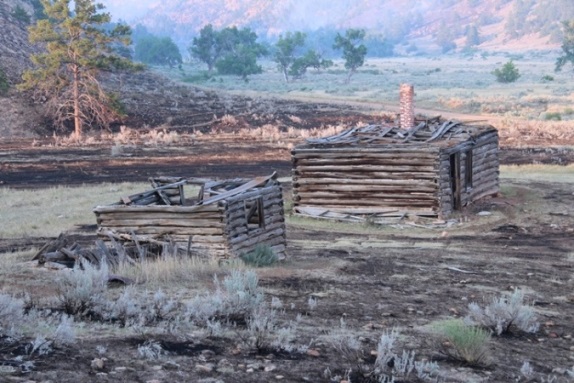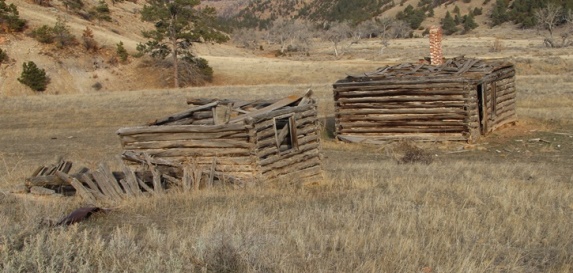Tag: Photo by Bill G
Some Montana firefighters no longer obligated to save homes from wildfires

The County Commissioners of Lewis and Clark County in Montana recently approved a resolution making it clear that county-level firefighters are not under an obligation to protect a home from a wildfire in the Wildland Urban Interface (WUI). Below is an excerpt from an article in the Missoulian:
“…A lot of crews think they have to protect homes, and we’re trying to make it clear they’re just sticks and bricks,” said Sonny Stiger, who helped write the resolution. “This lets our firefighters know they’re not obligated to put their lives on the line to save homes.”
Stiger, a retired fire and fuels specialist with the U.S. Forest Service and a board member with FireSafe Montana, said building defensible space around homes in the urban interface is the sole responsibility of property owners who choose to live there.
Stiger said the new resolution makes it clear that homeowners should not expect firefighters to put their lives at risk to defend property.
“We can save a lot of homes going back in after the fire front passes, or in the case of the Yarnell Hill fire, not going in at all,” Stiger said, referring to the Arizona blaze that killed 19 firefighters in June. “It’s time we stepped up at the county level to deal with this, and to let (firefighters) know they’re not obligated to protect homes…”
The resolution says in part:
Homes in the Wildland/Urban Interface will not dictate fire suppression tactics, strategies, or the location of fire lines.
The article claims this is a “first-of-its-kind resolution”, which may be the case. There is no doubt that some homeowners who moved into the WUI and refuse to cut or thin the trees and brush growing within 100 feet of their houses will be furious at this concept. Some of them take no responsibility as a property owner to make their homes fire-safe, but expect firefighters, many of them volunteers, to risk their lives to save their structures.
Placing the primary responsibility to protect a home from wildfire on the property owner, where it belongs, is very appropriate. County, city, and state regulations recognizing this do not exist in many areas..
On the Yarnell Hill Fire there was at least one person in a supervisory role who asked the Granite Mountain Hotshots to move from their safe, previously burned area, over to the the town of Yarnell in order to protect the structures, many of which were described later as not defendable due to brush and trees very close to the buildings. Some of the homeowners had done little or nothing to make their homes fire-safe. As the crew hiked through unburned brush toward the town, they were overrun by the fire and killed.
In the structural firefighting world you will sometimes hear opinions about risk-taking while fighting fire, including:
- Risk a lot to save a lot.
- Risk a little to save a little.
- Risk nothing to save nothing.
“Risk a lot” usually refers to rescuing occupants or preventing their death. “Save nothing” may apply to an abandoned building.
In wildland fire, vegetation could be in the “nothing” category. Sure, wildland fuels may have ecological, watershed, aesthetic value, or monetary value in the case of timber or pasture, but most vegetation has adapted or evolved to burn on a regular basis and will usually grow back. Houses grow back too, but firefighters don’t. Firefighters should never risk much to save acres OR houses.
White Draw Fire, historic cabins, one year later
The above photo shows some historic cabins on June 30, 2012 that firefighters worked hard to protect during the White Draw Fire northeast of Edgemont, South Dakota. The photo below was taken yesterday, about 16 months later. Both were shot by Bill Gabbert.
This was the fire on which the MAFFS 7 air tanker crashed on July 1, 2012, killing four crew members and injuring two. In July a memorial was dedicated a few miles away from the crash site in memory of the aerial fighters.
Aspen in the Black Hills
Fall River prescribed fire — before and after
On March 30 the Hot Springs, South Dakota Volunteer Fire Department conducted a prescribed fire along the Fall River to reduce the woody vegetation which could clog the flood control channel where the river passes through the city. We covered it then with several photos, but today I went back to see what it looked like. Below are photos taken during, just after, and six months after fire visited the river.
[portfolio_slideshow]
South Dakota: Cascade Fire
(UPDATED at 2:42 p.m. MDT, September 27, 2013)
Firefighters on the Cascade Fire 3 miles south of Hot Springs, South Dakota said it has burned 45 to 50 79.5 acres and they are calling it 80 percent contained. A National Guard Blackhawk helicopter will be assigned to the fire today along with two hand crews, a dozer, and an assortment of engines from federal, state, and volunteer agencies. A Single Engine Air Tanker is also available if needed.
Scroll down to see a slide show of photos from the fire.
****
(Originally posted at 2:43 p.m. MDT, September 18, 2013; updated at 8:17 p.m. MDT)
The Cascade Fire, 3 miles south of Hot Springs, South Dakota, was reported at about 2 p.m. MDT on Wednesday. By 2:30 it had blackened at least 5 acres and burned over the top of the Seven Sisters ridge. A couple of hours later the size was estimated at 15 to 20 acres and was being fought by state, federal, and local fire departments. At 8 p.m. the incident commander called it 40 percent contained.
The fire appeared to be burning on private land, but that was not confirmed.
A single engine air tanker (SEAT), Tanker 463 from Valentine, Nebraska, made its first drop over the fire at 3:56 p.m. At around 4:15 p.m. the Incident Commander inquired into the availability of a large air tanker. About 20 minutes later the dispatcher told him the closest one was in Idaho. Later I checked a map and that would have been 400 to 650 miles away.
After 5:00 p.m. a National Guard Blackhawk helicopter with a bucket was on scene. A second SEAT also dropped on the fire according to a spokesperson for the fire. The SEATs were from South Dakota and Valentine, Nebraska. They reloaded and refueled at the Hot Springs, SD airport, about five miles east of the fire.
All of these photos were taken by Bill Gabbert, except for the one of the SEAT refueling, which was supplied by South Dakota Wildland Fire.
[portfolio_slideshow]










